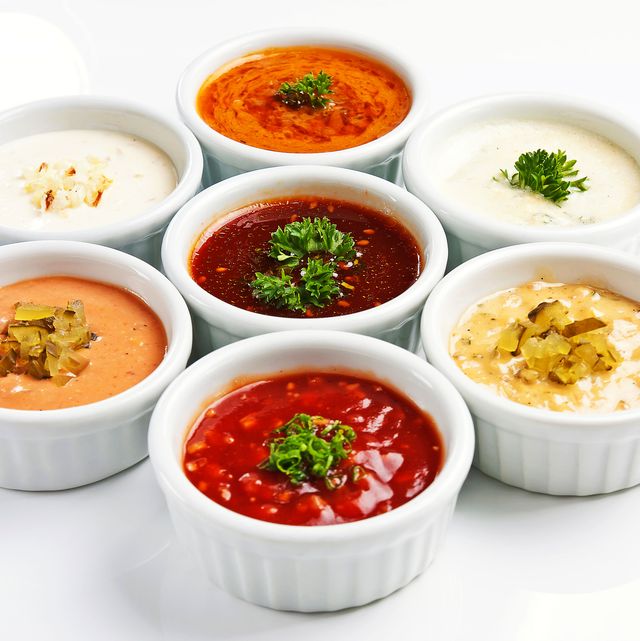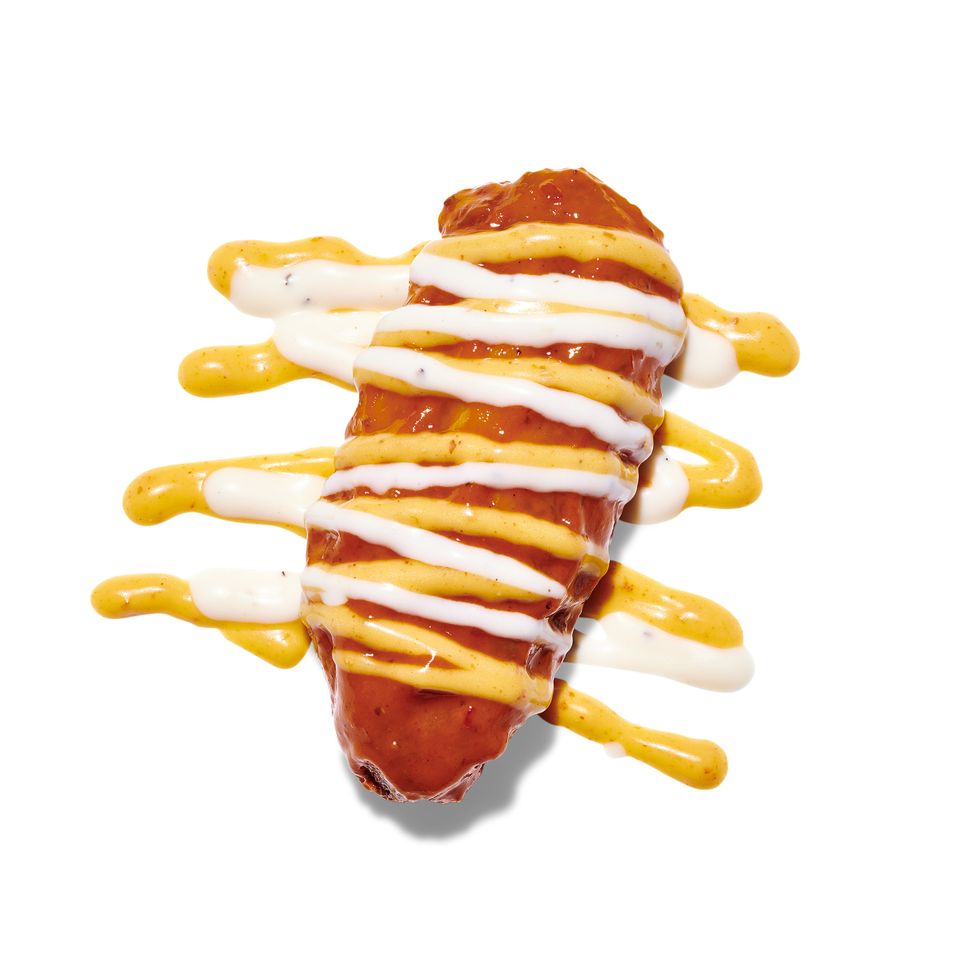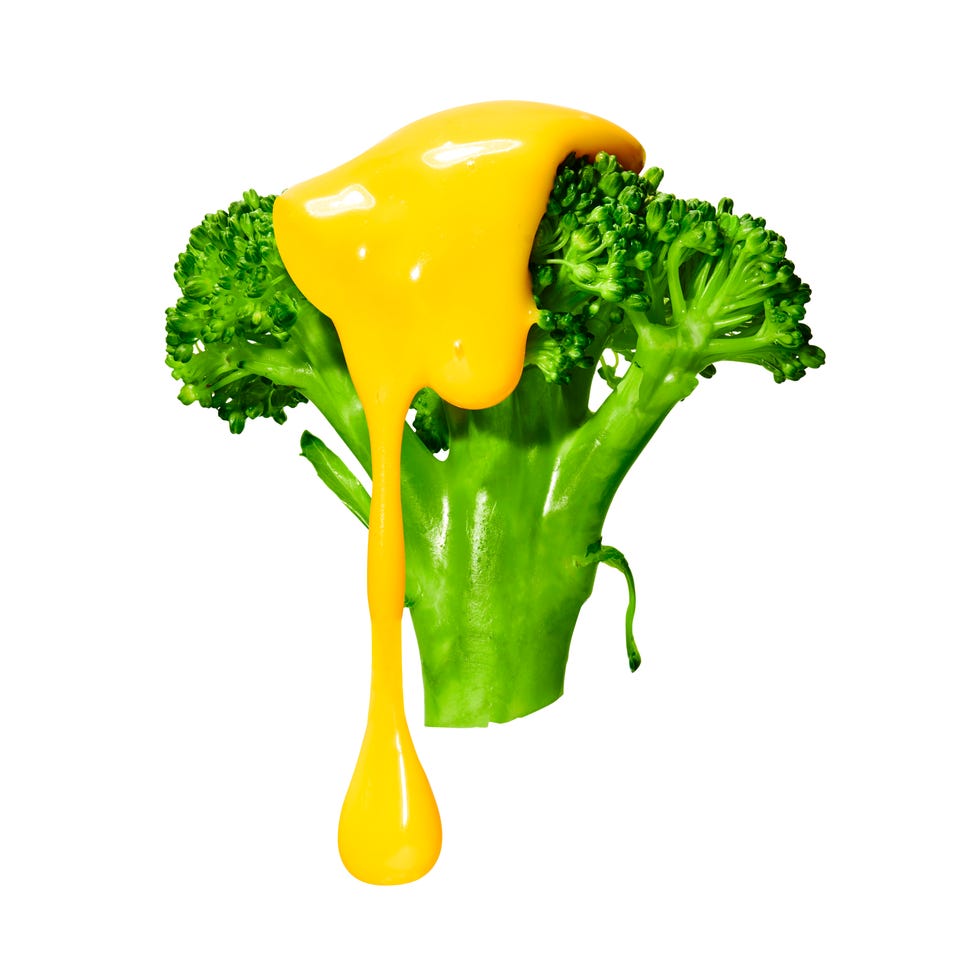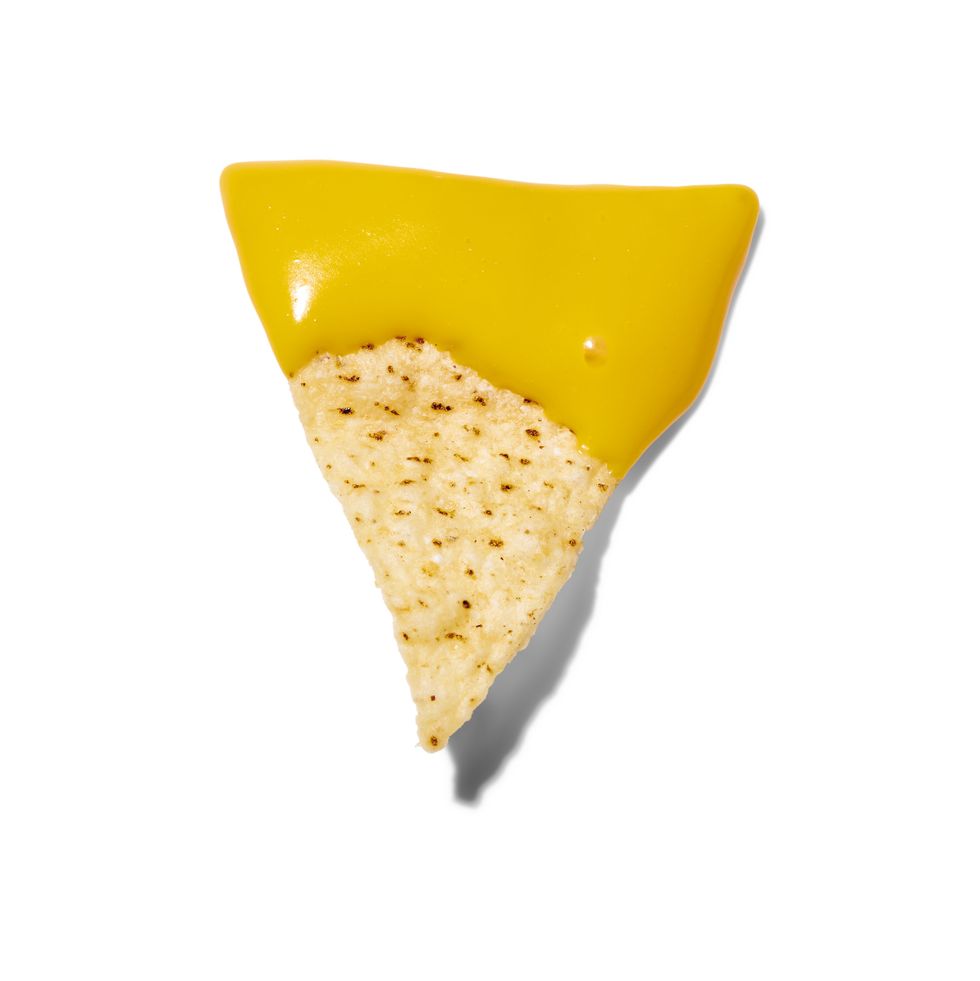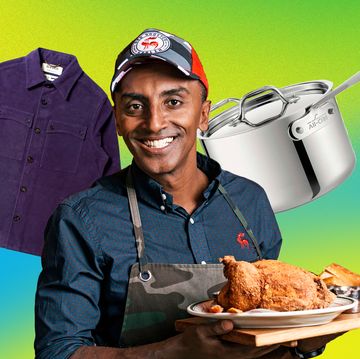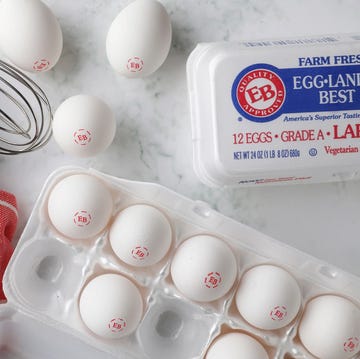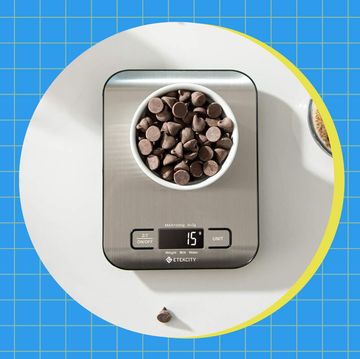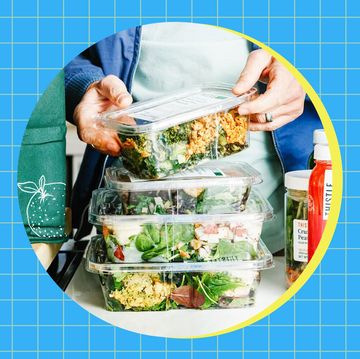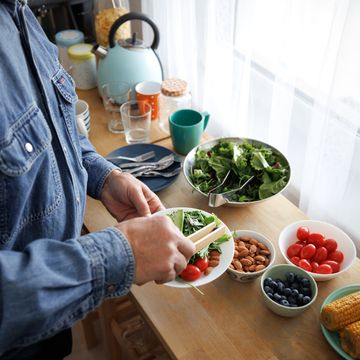IT'S HARD to pinpoint when our food culture tipped—or you could say dipped—into the slippery realm of stimulated eating, but we might as well start in 2017, which should be forever known as the Year That Hidden Valley Ranch Debuted a Mini Keg. The offering became so popular that the company claims it had to buy out all available sources of five-liter mini kegs in the world. And they still sold out.
Around the same time, BuzzFeed released a video with the obviously rhetorical title “Obsessed with Ranch Dressing? This St. Louis Restaurant Is for You.” The clip highlighted a place called Twisted Ranch that, yes, offered many twists on ranch as a side sauce. That video went viral, causing pandemonium for the midwestern restaurateurs.
Fast-forward a few years and Hidden Valley has more than 40 variations on its ranch. Twisted Ranch advertises 39 and is now selling its own bottles at Walmart, where there are vast and colorful aisles full of liquid flavorizers. These seem carefully engineered to take food that tastes sort of bad and make it sort of good—or at least a little more palatable. In fact, shoppers now spend more than $26 billion annually on condiments and sauces designed to soup up their foods, according to Euromonitor, a market-research firm. Those sales have risen by a rate of about 13 percent for the past five years.
As Hidden Valley Ranch marketing director Jacquie Klein sees it, ranch has become the perfect schmear to add “new flair” to any meal. A catchphrase from a recent ad campaign—“You Either Love It or You Really Love It”—seems to reflect a much broader shift in how we eat these days. Tostitos has scoop-shaped chips to help you shovel in more of its new Avocado Salsa. Even IHOP recently debuted a special Maple Sweet & Spicy Syrup to pour over its Chicken & Pancakes platter.
“There’s still so many foods that people have yet to discover ranch as a condiment for,” adds Klein, who points out that Hidden Valley also has a new line of ultra-flavorful Secret Sauces (available in spicy, smokehouse, and original ranch) in Sriracha-like bottles to dribble over tacos, burgers, and fries.
To coin a somewhat less-than-appetizing term, we’re living in the age of food lube. Americans love to dip, dunk, slather, and coat one thing in another to the point that there are now approximately a bazillion ways to amplify the taste of your meal and make it slide a little more easily down your gullet.
In some ways, the rest of your meal is really a delivery utensil. The result may be delicious. But what happens when you have to keep lubing up to chow down?
THE TRUTH is that food lube fills a void that convenience culture helped create.
For the sake of fast-casual dining—basically a style many mimic at home—cooks have abandoned old-school methods like stewing and braising, which lock moisture into food, in favor of dehydrating ones like frying and grilling. At the same time, many restaurants—and, yes, also home cooks—fall victim to what Scott Randolph, who runs the culinary consultancy Food & Drink Resources, calls “the sea of sameness,” because they all use the same ingredients.
Over time, however, the best lubes, like ranch and barbecue sauce, go on to achieve what Klein considers a “mega-flavor” status: They don’t just complement foods but can help sell them. They also cleverly hack our senses. As you chew, the food moves easily around your mouth to hit more taste buds and unlock more aromas. That prompts your salivary glands to produce drool. “It kind of literally swishes the food around our mouth, so it makes it taste better in that way, because we get more of the flavors,” says Jonathan Deutsch, Ph.D., who runs Drexel University’s food lab.
The result can be strangely addictive. There’s some evolutionary psychology at play—our ancestors had to avoid chipped teeth to keep eating—but Dipayan Biswas, Ph.D., a professor of marketing at the University of South Florida, has found that when people are offered the same foods, such as cookies or brownies, with slightly different textures, they’ll eat more of the softer and smoother treats, in part because we’ve been conditioned to think foods with these qualities (which might hint at extra butter or cream) taste better than rough ones.
Making decisions becomes more complicated when eating gets hands-on. A recent study in the Journal of Retailing shows that people who think they have high self-control will eat more of something when they ditch utensils and use their hands. The fact that food lube often looks literally painted on with a neon sheen is part of the food foreplay, too: Research has shown that the intensity of a food’s color increases the anticipation of great flavor among taste testers.
Regardless, we’re well past the point of a little dab’ll do ya. Randolph, the culinary consultant (who also works for IHOP and helped launch TGI Fridays’ still-popular Green Bean Fries with Cucumber-Wasabi Ranch), says most restaurants follow a seminal rule for dips: Make them extra chunky and super clingy so that the sauce becomes a big part of your next bite. Some are hot or tangy but savory as well, offering multiple points of attraction.
THE SLICKEST part of food lube is that once you love it, you really might not be able to love food without it. “If we always dip healthy food in these sauces, we get less exposure to the actual taste of the healthy food,” says Djin Gie Liem, Ph.D., an associate professor at the Centre for Advanced Sensory Science at Deakin University in Australia. “It will be more challenging to develop a liking for the taste of these healthy foods.”
That our food chain is designed to prize quantity and shelf stability over variety and taste doesn’t help things, especially when food by its naked self isn’t all that sexy looking. As General Mills found out when it tried to take artificial coloring out of Trix cereal a few years ago, just the color of a more naturally hued offering can be a turnoff. Many of us actually need to see some Wildberry Blue or Grapity Purple to get excited.
Let’s be blunt about the nutritional issues that food lube may create: Creamy often equals high-calorie, sweet often means sugary, and salty can be a salt bomb. Some restaurant dishes combine these qualities in a pleasure loop that encourages more eating. “The [restaurant] formula is to take a refined carb, stuff it, fry it, add some cheese, add some sauce,” says Lindsay Moyer, a nutritionist at the Center for Science in the Public Interest. Food researchers have found that people who consume highly processed foods are more likely to eat faster and take in more calories.
The ubiquity of food lube may have a larger long-term consequence. Liem says that, in general, the more you’re exposed to something, the more likely you are to establish a preference for it. This so-called exposure effect is most commonly studied in kids because it can be used to get them to eat healthier things. If they don’t like it, the logic goes, just keep trying.
But people who already like food lube can pretty much secure a bottomless vat of it—anywhere. If you love TGI Fridays’ Green Bean Fries with Cucumber-Wasabi Ranch, for instance, they’ve made their way into the grocery’s freezer aisle. Why ever try anything different again? As we eat salty, sweet, or spicy foods, they generally trigger a dopamine hit, which helps explain why comfort food really feels comforting. But repeated exposure can desensitize you to the extent that, over time, you may crave higher levels of each to feel satisfied, adds Deutsch.
So how should a modern food lover lube up safely? Moyer doesn’t even try to persuade people who want to eat more vegetables to skip the dip. Instead, she suggests tzatziki, a yogurt-based goop that, like hummus, is healthy overall but has about half the calories per tablespoon of hummus. Hidden Valley has its own Greek-style, yogurt-based dressings, too, but continues to release updates to lines like Blasted, which includes flavors such as Ranch Dipped Pizza and Zesty Ranch Chip. No pizza or chips required.
This story originally appeared in the September 2020 issue of Men's Health.
